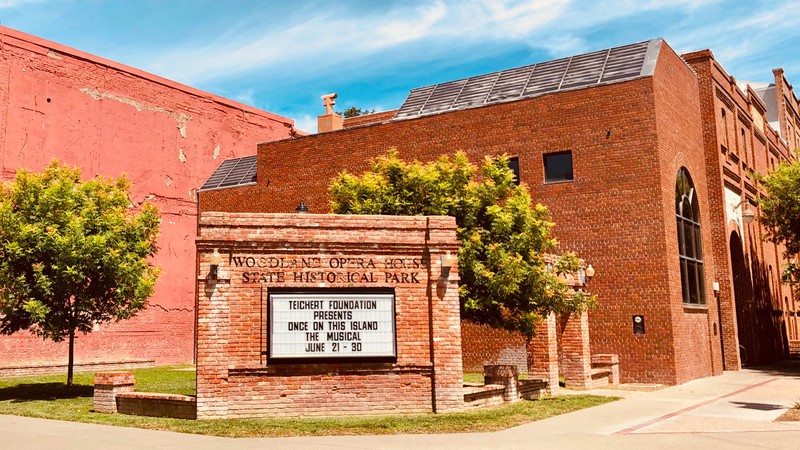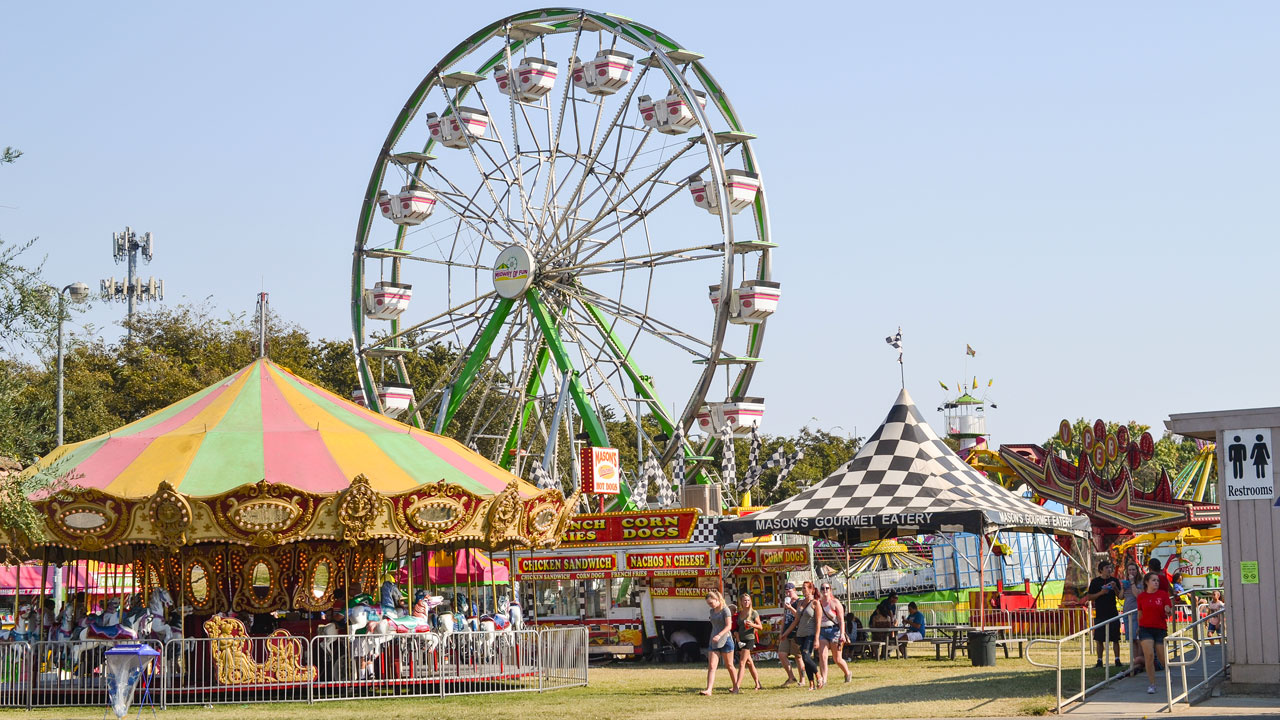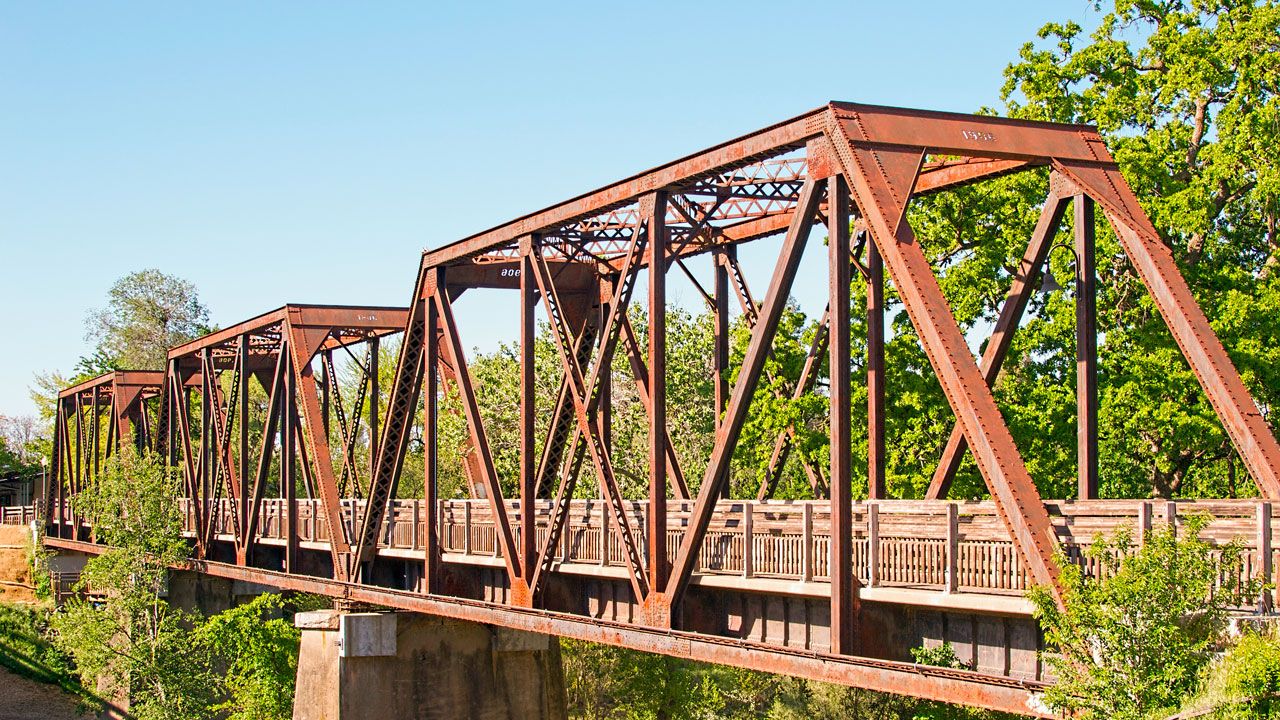Want to learn more about Yolo County’s history? Here are some good places to visit and sites to browse.

The Woodland Opera House—George M. Cohan played there, as did John Philip Sousa. ZikG Shutterstock.com
There’s no easy answer for why Yolo County is called Yolo County. One of California’s original counties in 1850, it was originally named Yola. The name could be derived from a Patwin tribal word for a place of water reeds (“Yo-loy”). Or, as other historians have it, nearby the reeds lived one Yodo, chief of a village called Yodoi. In any case, it all has nothing to do with the familiar anagram that means we’ve got one trip around this world, so grab the gusto.
The first European visitors to the Yolo County area were French Canadian trappers searching for beaver pelts. Beavers would have been abundant in these since-drained marshes of the Sacramento River. Cache Creek was named by such hunters, who cached their goods in the nearby trees.
Yolo County Historical Society has links to a digital clearinghouse of more than 20 local history organizations. And there are also online records of the inhabitants in the county’s four different cemeteries. It’s a starting point for the consideration of Yolo County from pre-Columbian days to the present.
The Patwin, Yolo County’s original inhabitants, are part of several related tribes that speak Wintuan languages. Their descendants are the Yocha Dehe Wintun Nation, a federally recognized tribe in Yolo County, and the tribe’s website offers some educational resources. Yocha Dehe also has plans to preserve the Cañon School, a one-room schoolhouse that dates back to 1861. Wintun traditions are also celebrated at the Tending and Gathering Garden, a plot of land where members of the Native community and the Cache Creek Conservancy demonstrate traditional land and plant management practices.
Yolo’s county seat, Woodland, is a charming town with a historic trestle bridge and numerous stately, century-old (and older) homes, as well as a walking path along Putah Creek.
The WPA Guide to California claims that Woodland was known back in the 1860s as a hamlet called “By Hell,” because of a local tavern-keeper’s favorite epithet. Those rough and ready days were gone by the time of the opening of the Woodland Opera House.
Now owned by the state of California, this landmark was built in 1885, burned in 1892, and reopened in 1896. George M. Cohan played there, as did John Philip Sousa and his band. Today it’s the home of a theater troupe performing seven musicals this 2023-4 season. It’s also a theater-arts teaching facility.
Nearby is the 45,000 square foot California Agriculture Museum containing the world-class Heidrick collection of some 100 antique tractors, trucks and farm machinery. Impressive to kids, but the adults get served too. At the end of October there’s a “Tractors and Brews” fest, as well as a display of moonshine-production.
Also in October, the best time to be in Yolo County, Woodland offers a tour of local houses as well as a night visit to a supposedly haunted drugstore. Included on the 2023 tour were five of the county’s finest vintage houses, among them the Gable Mansion (c.1885), a 12,000-square-foot masterpiece of Victoriana with restored gaslight and a movie theater in the basement.

Woodland’s Yolo County Archives are the caretakers of the area’s local history, with plenty of primary sources for researchers. With the help of the Native Sons of the Golden West, archivists engineered a museum of the history of the Yolo County fair. The fair started in 1893 and has been held every August since, almost (it was closed during the duration of WWII).
Other landmarks in town include the lovingly restored Woodland Train Depot (the third built in Woodland), which serves as a museum for the preservation of railroad history.
The Historical Society of Winters tends the local history of a town that’s an important stop on I-5 between Redding and the San Francisco Bay. The restaurant/deli/tourist attraction Granzella’s is in downtown Winters, with its air-conditioned bar containing a Noah’s Ark worth of trophy animals, among them a polar bear. John Reid Wolfskill was Winters’ first English-speaking arrival; he came out west to join his brother, who had helped blaze the Santa Fe Trail. Wolfskill homesteaded on the banks of the Putah Creek, when the grizzlies were still at large. As a farmer, he was the first to see the area’s billion-dollar potential for grapes, olives, and nut-growing, and he made good money selling fruit to the 49ers. UC Davis currently owns the grounds of his farm as an agriculture lab.

The Davis Historical Society offers a timeline for this city’s history prior to its incorporation, beginning in 1868 with the creation of Davisville. And other historical resources can be found. Old East Davis has its own blog. The neighborhood was spared from townhouse development, and now preserves both Victorians and small wooden houses alike, most more than a century old. Davis’s first library, a frame house, is now a museum named after the city’s first librarian Hattie Weber.
UC Davis, which grew out of the University Farm, an ag school that sprouted in 1905, has become one of America’s top-ten public universities. Despite a new emphasis on engineering, satellite campuses and a strong liberal arts school, it’s still the first-choice school if you long to become a veterinarian. UC Davis’s Archives and Special Collections contain a multitude of reference materials, including Christine Blanchard’s first-rate collection of the writings of Kipling. Here also are traces of 1970s history, when Davis was a center for art that was both avant-garde and playful.
The West Sacramento Historical Society was founded in the early 1990s to study the past on the Sacramento River’s industrial side. The big river still carries a considerable amount of freight, and this organization traces a saga that begins with the Indigenous natives of the Sacramento Valley and continues to the era of paddlewheel boats.